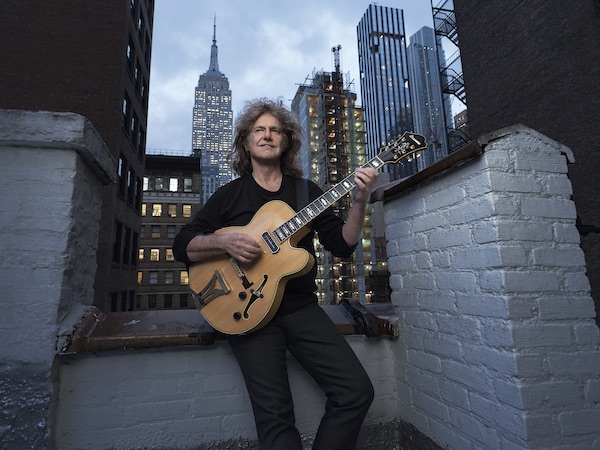Apr 2, 2024 12:59 PM
Saxophonist, Sonic Explorer Casey Benjamin Dies at 45
Casey Benjamin, the alto saxophonist, vocalist, keyboardist and producer who stamped his distinctive sounds on the…

Guitarist Pat Metheny topped two DownBeat Readers Poll categories this year: Guitar and Jazz Album, for his disc From This Place (Nonesuch).
(Photo: Jimmy & Dena Katz)A conversation with Pat Metheny is similar to one of his shows: Some parts seem carefully constructed, while others are loose, improvisational flights. But the thematic undercurrent is one of sturdy, satisfying logic.
DownBeat reached the iconic guitarist at his home in New York’s Catskill Mountains to discuss his two wins in the Readers Poll, in the categories Guitar and Jazz Album. The latter accolade is for his transcendent disc From This Place (Nonesuch), featuring a program of 10 original compositions. Constructed differently from any other album in a diverse catalog that stretches back to 1976, the core tracks for From This Place were recorded by Metheny (guitars, keyboards), Gwilym Simcock (piano), Linda May Han Oh (bass, voice) and Antonio Sánchez (drums).
Later, Metheny wrote orchestral parts that were performed by the Hollywood Studio Symphony, conducted by Joel McNeely. Other textures were provided by Grégoire Maret (harmonica), Luis Conte (percussion) and Meshell Ndegeocello, who sings on the title tune.
The result is not only one of the most ambitious projects in his career, but also one of the most beguiling. Metheny has succeeded in melding quartet improvisations with intricate, potent orchestrations in a way that feels wholly organic. It is not the type of album he could have made as a youngster.
“Some records function as documentaries,” Metheny said. “You get some great musicians and you go into a room, and you play [each piece] a couple of times. You pick the best one, or maybe do an edit between a couple [of takes]. And that has a very specific kind of result. And most of the early records I made were [like] that, just out of necessity. I mean, you were given a day or two to make a record.
“Then, as time went on, I really started to think more in terms of, let’s say, a novel or a feature-film approach to the process and the result. But regardless of the approach, I never wanted to diminish the improvisational focus of it all.
“So, doing documentary records is great, but then … there’s The Beatles. I mean, there was this whole world of what was possible under the auspices of this novel [or] feature-film way of thinking. [Miles Davis’] Bitches Brew would be an example of a long-form type work. But it was still built almost entirely around a documentary approach of getting guys together playing in a room, and then a lot of stuff happening in the editing of that material.

Benjamin possessed a fluid, round sound on the alto saxophone, and he was often most recognizable by the layers of electronic effects that he put onto the instrument.
Apr 2, 2024 12:59 PM
Casey Benjamin, the alto saxophonist, vocalist, keyboardist and producer who stamped his distinctive sounds on the…

“He’s constructing intelligent musical sentences that connect seamlessly, which is the most important part of linear playing,” Charles McPherson said of alto saxophonist Sonny Red.
Feb 27, 2024 1:40 PM
“I might not have felt this way 30 to 40 years ago, but I’ve reached a point where I can hear value in what people…

Albert “Tootie” Heath (1935–2024) followed in the tradition of drummer Kenny Clarke, his idol.
Apr 5, 2024 10:28 AM
Albert “Tootie” Heath, a drummer of impeccable taste and time who was the youngest of three jazz-legend brothers…

“Both of us are quite grounded in the craft, the tradition and the harmonic sense,” Rosenwinkel said of his experience playing with Allen. “Yet I felt we shared something mystical as well.”
Mar 12, 2024 11:42 AM
“There are a few musicians you hear where, as somebody once said, the molecules in the room change. Geri was one of…

Larry Goldings’ versatility keeps him in high demand as a leader, collaborator and sideman.
Feb 21, 2024 10:45 AM
Are you having any fun? Larry Goldings certainly is. Consider just two recent examples:
Scene 1: “If anyone had…